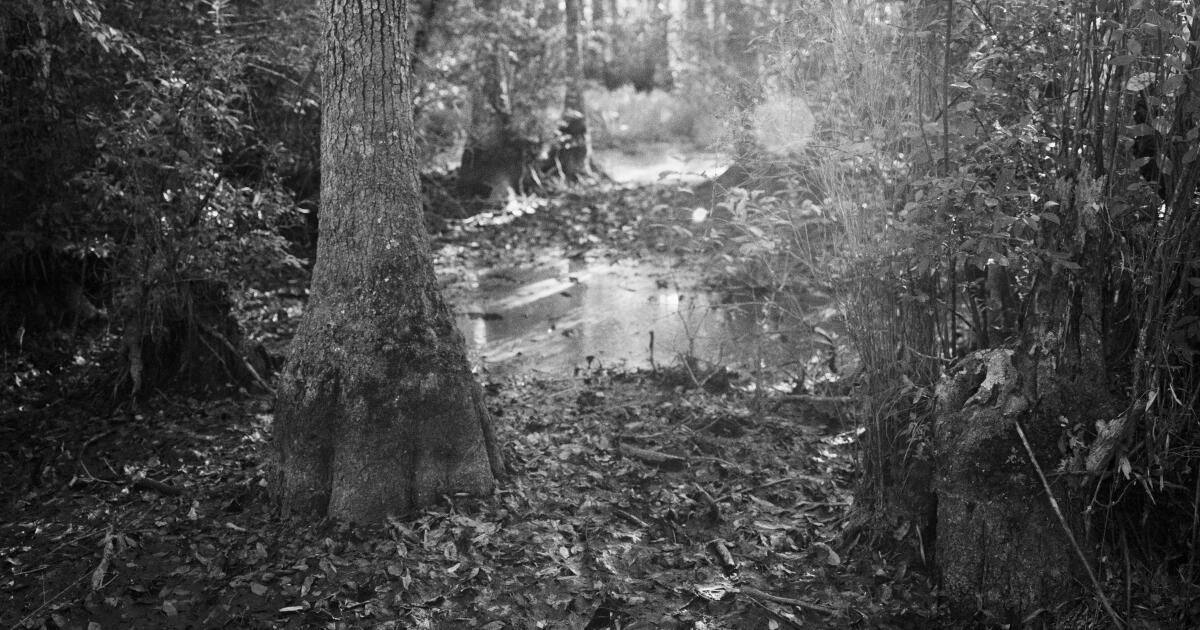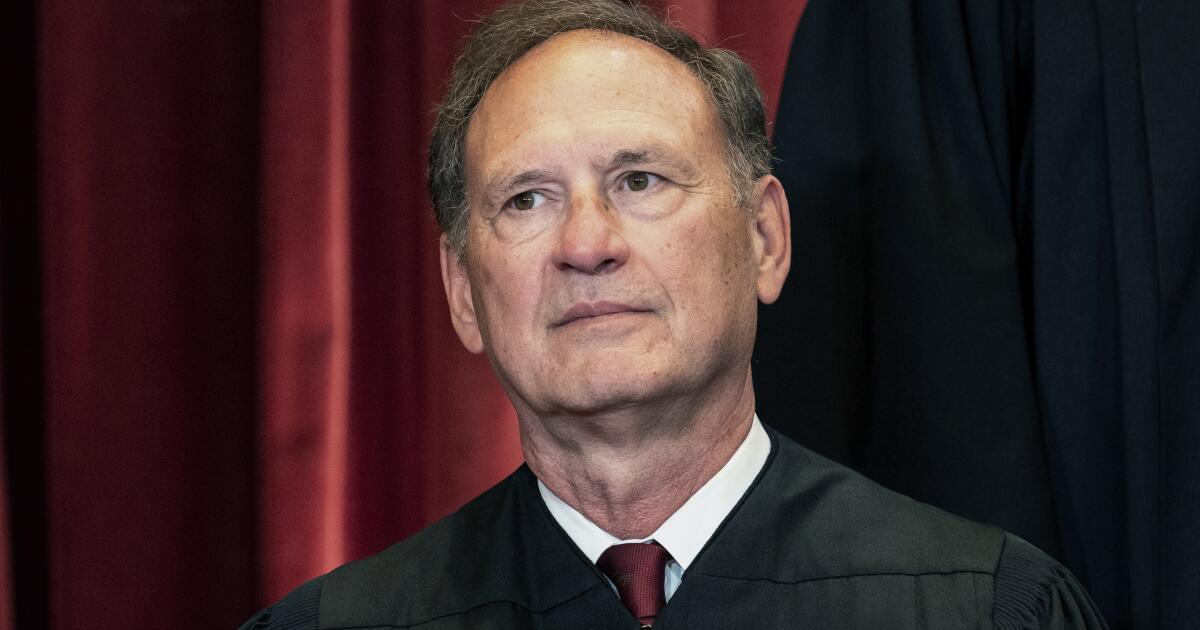Book review
Nat Turner, Black Prophet: A Visionary Story
By Anthony J. Kaye and Gregory P. Downs
Farrar, Straus and Giroux: 352 pages, $30
If you purchase books linked on our site, The Times may earn a commission from Bookshop.org, whose fees support independent bookstores.
Nat Turner, the most famous slave rebel in American history, has always been a mysterious, brooding, and important figure. In both history and popular memory, few names in America’s long struggle against slavery carry such a weight of heroism and chilling fear. Between August 22 and 24, 1831, in Southampton County, Virginia, located in the southeastern corner of the state, the 31-year-old Turner led an insurrection that killed some 55 people in two days and involved as many as 60 rebels.
The gruesome bloodshed affected primarily the families of slaveholders in a relatively small “township” a few dozen miles from Jerusalem, the county seat. Victims ranged from the elderly to women and children, and one decapitated infant. Turner commanded four key warriors who carried out most of the killing with axes, swords, fence rails and a few guns: Henry Porter, Hark Moore, Nelson Edwards and Sam Francis.
Turner — or Nat, as he is called in Anthony E. Kaye and Gregory P. Downs’s “Nat Turner, Black Prophet” — has lived with such fascinating interest because when he was captured, in the wake of the rebellion and his 10-week hiding, the nearly starved rebel sat through more than two days of interviews with a local attorney, Thomas R. Gray.
(Farrar, Straus and Giroux)
With the man chained before him, Gray recorded, and in a sense invented, a “voice” for Turner, partly in the extraordinary details of his life and rebellion, but largely also in the religious visions that motivated him. Gray had his own motives: he needed money urgently, and a month after Turner’s execution, “The Confessions of Nat Turner” was published as a best-seller. The debate has never ended as to how much of this classic text the voice or the words are really Turner’s. Most of what we know of the rebel leader comes from that single document.
In movies, novels, and generations of scholars, Americans have tried to explain what happened in southern Virginia in 1831. All who study Turner today agree that he was extraordinarily intelligent, austere, deeply religious, and that he experienced repeated visions and spiritual signs. But no book has taken the biblical roots of Turner's story as seriously as Kaye and Downs's.
The work is an extraordinary collaboration: Kaye died in 2017 after years of research and some writing; Downs took mountains of notes and prose and rewrote “almost every word.” Downs says the book “consists of his [Kaye’s] “Arguments and research, but my words.” In that sense, this is a highly intriguing feat of the historian’s craft, and, for Downs, a profound achievement. Downs concludes, curiously, that the book is his “interpretation,” but “the product” of Kaye’s “intelligence and creativity.” There have been many collaborations among historians, with a scholar finishing the late writer’s work, but none like this one.
Downs calls the book an “act of multiple ventriloquisms”: Turner through Gray, Kaye through Downs, all trying to grasp the intent and meaning of the words. But Kaye believed that historians had overlooked the depth of Turner’s devotion to the stories and tribulations of the Hebrew prophets. The authors admit that it is “impossible” to know how closely Turner read the Old Testament, but there is no doubt that Kaye at least intended to propel the enslaved worker-preacher out of his immediate world and “into a biblical era and time.” The book reads like a prolonged critique of academic secularism. The “most significant misreading of Nat Turner,” the authors argue, “lies in the discipline [history’s] secular worldviews.”
According to the authors, Turner came of age in a “militant Methodism,” with a deeply personal connection to God and “probably” (a word used a lot with “perhaps”) steeped in the Methodists’ devotion to natural rights. He may also have been influenced by larger events in the age of revolutions, the War of 1812, and in particular the foiled slave rebellions in Richmond, Virginia, in 1800, and Charleston, South Carolina, in 1822. However, lengthy forays into Methodist-inspired events in Nova Scotia in the 1780s and Sierra Leone in the 1800s provide only vague contexts for Turner’s evolving revolutionary faith. The authors posit a “campaign” by “Nat’s family” to achieve his manumission, but it is unclear who comprised that family. We still don't know whether a woman identified as “Cherry” was actually Turner's wife, whom he may have married in 1822.
The most striking feature of this book, however, is its reflection on the character of a prophet and Turner's place in that tradition. In the Hebrew Bible, prophets were created by God, often against their will; they were people who could find the words to explain catastrophes or life-changing events, and they spoke from dimensions they themselves did not understand. Prophets were filled with doubts about their own calling and authority; they were anxious and waited long for signs that only rarely came. In this work we enter Turner's consciousness through the prophet Jeremiah's struggles for certainty.

Anthony Kaye, left, and Gregory Downs, co-authors of “Nat Turner: Visionary Prophet.”
(Photos by Vivian Kaye and Diane Downs)
The Bible’s prophets weakened under the weight of their own visions. Turner, the authors say, slowly came to see his “commission” in visions in the sky, in the blood he saw on corn, in a solar eclipse or a blue sunspot, and in his repeated recollection of the biblical plea: “Seek ye the kingdom of heaven, and all things shall be added unto you.” After prolonged fasting and prayer, Turner saw black and white spirits fighting in the sky. But still he “murmured and lingered.” By 1828-31, he came upon a “war story,” so common in the Hebrew Bible, that he had to tell it and then act it out.
Sometimes in the book the certainty The way the authors enter Turner’s consciousness and represent his vision may unsettle some readers. How do they know what they know? How did Nat or Jeremiah know? This book demands respect for both the critical craft of history and faith, at least the roots of its traditions. The Hebrew prophets, as a source of worldview and story, remain present throughout our culture. The authors admit that they are in a speculative zone, but their prose is declarative, not passive. The writing can be dense at times, whether on theology or on the details of the rebellion, but also quite beautiful. Downs is a superb, even lyrical, writer. He admits that Turner is “maddeningly elusive,” but still asserts without hesitation that “he was a prophet.”
After all, “what was at stake,” the authors write as if imitating Turner, “was not just the end of slavery, but the end of the world. The Spirit did not tell Nat to create a new nation; he told him to live up to his type. [of prophet] helping to usher in a new era.”
David W. Blight is a professor of history at Yale University. His latest book is “Yale and Slavery: A History.”











